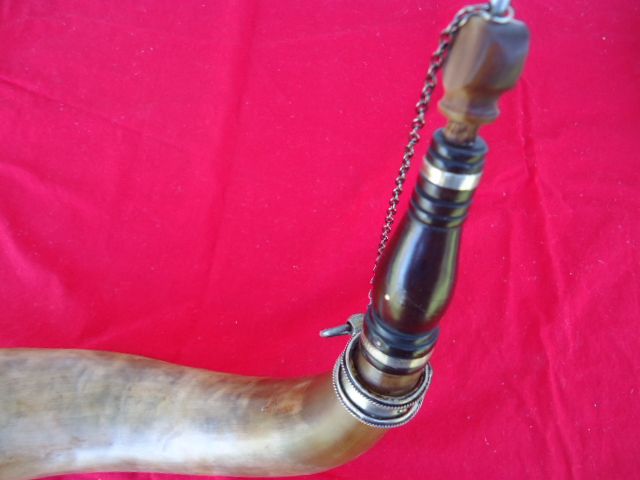Obi-Wan Cannoli said:
What is the method used to join a wooden or different horn type neck to a horn body?
If epoxy turns out to be the consensus on this one, how would I make that joint look H/C.
Thank you.
The simplest method is to form the components so that either the tip or body need to have a shoulder and the other needs a matching inset to receive its mate. Then they can be pinned together which is how butt plugs are set into the horn body. A good seal can be made with wax, pine resin, hide glue or epoxy - as you desire.
(There are people who will claim that such sealing could make a horn into a bomb should a spark make its way into your horn. I am leaving that to your choosing after simply mentioning it.)
Here is a Southern Banded Horn which has two parts to the applied bone tip - both of which are pinned to each other and then pinned to the main horn body. This is a common method for this type of horn.
It may be possible to hand file and scrape to join such components, but a lathe is far easier and makes a better product.
A more advanced method is the screw tip where the components are almost always prepared on a lathe to be rounded. Then the shoulder and receiving inset are turned so that they can be threaded and fit together tightly. A lot of math and special tools are used - or some serious turning skills could be used, but that exceeds my skill at the moment.
Here is a Philly applied collar screw tip horn which is a much more advanced project.
To learn more about these, I suggest:
Art DeCamp's Pennsylvania Horns of the Trade
Or the Honourable Company of Horners.
Or hit me in a PM. Be patient as I am retired and prone to wander all over as the Spirit moves me or the Harley seems to want to go.
CS







